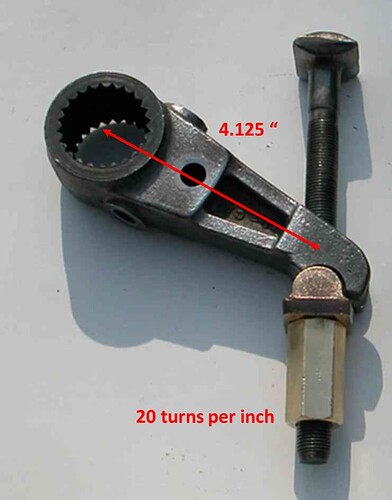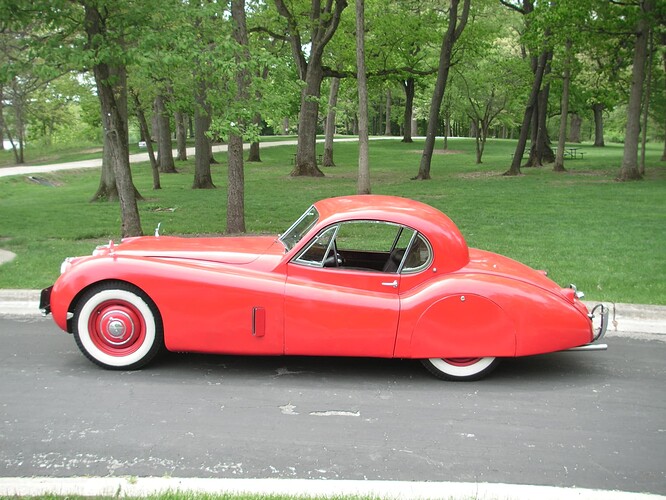Need the help of some “clever” people or alternatively those with a lot of experience that “have been there before”.
After 2 years of restoration, I had my 1954 XK 120 OTS on all four wheels today, now with engine and body on the chassis. It was immediately clear that the ride height at the front was too low. Measuring under the (beginning of the) straight part of the main chassis beams, I wrote down 6.25" where it should be 7 inches. So 3/4" too low.
No questions on the way the adjustment should be made, but this time the following question:
Does anybody know the relation between 1 turn of the brass Adjustment Nut C.3097 and the resulting increase/decrease of the ride height under the chassis?
I know that the most applied technique for this is “try and measure” but why not “first time right”?
I did some calculations (as I don’t have the experience that some of you might have in this area) and came up with the following. If you’re not interested I can fully understand and you can stop here.
Adjustment bolt C.3096 has a UNF ½“ thread with 20 TPI corresponding with a distance of 1/20 (0.05) inch per full turn. There are 24 splines on the end of the Torsion Bar meaning each change of spline changes the position of the torsion bar by 15°. The distance from the heart of the adjusting bolt to the center of rotation of the Torsion Bar is about 4.25 inches (see pic below). Changing the position of the Adjustment Lever by one spline (15°) equals about 1.125 inch adjustment of the brass Adjusting Nut C.3097, which is equal to just over 22 turns of the brass nut. So if you turn the brass Nut C.3097 more than 20 turns, it would be recommended to change the position of the Adjustment Lever to the next tooth, in order to keep the position of the Adjustment Bolt more or less in the same spot.
At the front of the Torsion Bar, the length of the Lower Wishbone Lever measured from the center of the Torsion Bar to the center of the Wheel is about 17 ⅞”. So, any adjustment of the position of the Adjustment Lever via the brass Adjustment Nut has a multiplication factor of 4.3 (17⅞ divided by 4⅛) assuming the Torsion Bar is totally inflexible (which it is not).
This means that one turn of the brass Adjustment Nut C.3097 (representing 0.05“) will translate in (4,3 x 0.05” =) 0.215“ at the road wheel To compensate for the ¾ inch that the car was too low, I would need 3.5 full turns of the brass Adjustment Nut. (0.75 divided by 0.215” = 3.5)
Comments please or even better if somebody knows the relation between turning the brass nut and the increase/decrease of the ride height, please correct me
I will start tomorrow with the adjustment and hope to be able to tell you within a few days whether all the above is correct or simply bull …
Bob K.



